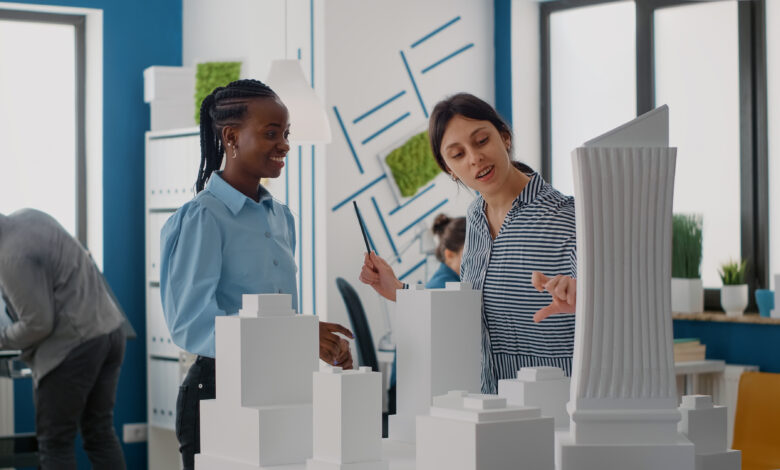The Importance of 3D Modeling in Architecture Design

Introduction
The evolution of technology has played a significant role in shaping various industries, and architecture is no exception. Among the technological advancements, 3D modeling has emerged as a cornerstone in modern architectural design, transforming the way architects plan, design, and conceptualize buildings. This blog post delves into the importance of 3D modeling in modern architecture design, highlighting how this technology enriches the architectural process from conception to completion.
Understanding 3D Modeling
3D modeling is the process of developing a mathematical representation of any surface of an object (either inanimate or living) in three dimensions via specialized software. The product is called a 3D model. It can be displayed as a two-dimensional image through a process called rendering or used in computer simulation of physical phenomena. In architecture, 3D models are used to visualize and plan out the design of structures before the first brick is laid.
The Advent of 3D Modeling in Architecture
The transition from traditional 2D drawings and blueprints to 3D modeling in architecture marked a pivotal change in how architects and designers approach projects. Initially, architects relied on physical models or hand-drawn sketches to pitch and develop their ideas. With the advent of 3D modeling software, architects can now create more precise, detailed, and easily modifiable designs, fostering a more creative and efficient design process.
Benefits of 3D Modeling in Architecture
Improved Visualization
One of the primary advantages of 3D modeling is the ability to visualize the architectural structure in detail before it is built. This visualization goes beyond what 2D drawings can offer, providing a life-like representation of the structure, which helps in making better design decisions.
Enhanced Accuracy
3D modeling software enables architects to detect and correct potential design issues early in the design phase, which can save time, resources, and costs associated with changes made during the physical construction stage.
Efficient Project Management
3D architectural models can be integrated with project management tools, allowing for better scheduling, budgeting, and resource allocation. This integration enhances the efficiency of the project management process, ensuring projects are completed on time and within budget.
Better Communication
3D models facilitate more effective communication among architects, clients, and builders. By providing a visual representation of the project, all parties can have a clear understanding of the design, reducing misinterpretations and errors.
Sustainability and Innovation
3D modeling supports sustainability by enabling architects to simulate the energy performance of buildings, promoting the design of energy-efficient structures. Additionally, it encourages innovation by allowing architects to experiment with complex designs and materials.
The Process of Creating 3D Architectural Models
The process of creating a 3D architectural model typically involves several steps:
- Creation of a Conceptual Design: This is the initial phase where ideas are brainstormed and conceptualized.
- Modeling: Using 3D modeling software, the conceptual design is turned into a detailed 3D model, including architectural elements such as walls, windows, doors, and other specifics.
- Texturing and Material Application: Textures and materials are applied to give the model a realistic appearance.
- Lighting: Proper lighting is added to enhance the visual effects of the model.
- Rendering: The model is rendered to create high-quality images from the 3D model.
- Review and Revision: The model is reviewed, and any necessary revisions are made to ensure the final model meets the project’s objectives and requirements.
The Future of 3D Modeling in Architecture
The future of 3D modeling in architecture promises even greater innovations and advancements. With technologies like virtual reality (VR) and augmented reality (AR), architects and clients will be able to “walk through” their designs in a virtual environment, providing an immersive experience. Additionally, the integration of artificial intelligence (AI) with 3D modeling software could automate routine design tasks, further enhancing the design process.
Conclusion
The importance of 3D modeling in modern architecture design cannot be overstated. It offers numerous benefits, from improved visualization and accuracy to enhanced project management and communication. As technology continues to evolve, the potential of 3D modeling in architecture will only grow, leading to more sustainable, innovative, and efficient design processes. Architects, clients, and builders are encouraged to embrace and invest in 3D modeling technology to realize these benefits fully.
Call to Action
Ready to revolutionize your architectural design process? Start harnessing the power of 3D modeling today! Whether you’re an architect, designer, or enthusiast, take the first step towards creating stunning, sustainable structures. Contact us now to explore our architectural 3D modeling services and discover how we can elevate your projects to new heights. Plus, if you’re looking for the perfect plot of land for your next endeavor, visit reapse.co to browse our selection of premium properties. Don’t wait, dive in now and turn your architectural dreams into reality!
FAQs
- Is 3D modeling only used for large-scale architectural projects?
- No, 3D modeling is used across a wide range of projects, from residential homes to skyscrapers and everything in between. It is a versatile tool that can adapt to various scales and scopes of work.
- How long does it take to learn 3D modeling software?
- The time it takes to learn 3D modeling software varies depending on factors such as prior experience, the complexity of the software, and the individual’s learning style. However, with dedication and practice, most people can become proficient within a few months.
- Can 3D modeling software simulate real-world construction challenges?
- Yes, advanced 3D modeling software often includes features such as clash detection and structural analysis, which allow architects to identify and address potential construction conflicts before they arise on-site.
- What are some common misconceptions about 3D modeling in architecture?
- One common misconception is that 3D modeling is solely for creating flashy visualizations. In reality, 3D models serve as valuable tools for design exploration, coordination, and documentation throughout the entire project lifecycle.
- How does 3D modeling contribute to sustainable design practices?
- 3D modeling enables architects to analyze the environmental performance of their designs, optimize energy efficiency, and minimize waste throughout the construction process. By integrating sustainability principles into the design phase, architects can create buildings that are both environmentally responsible and aesthetically pleasing.




